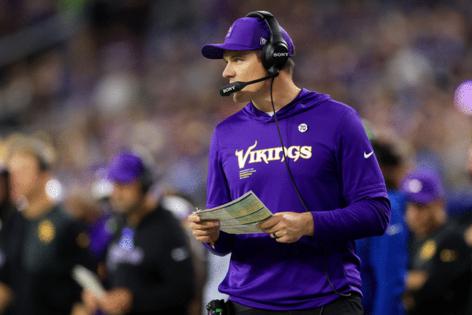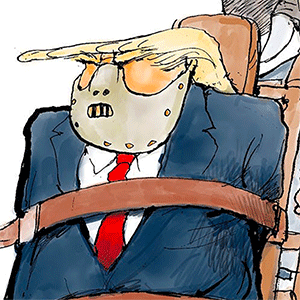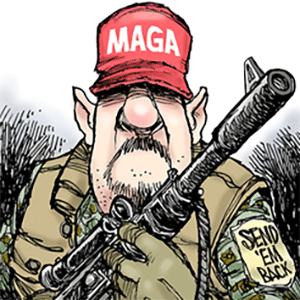Ben Goessling: Vikings spent big to win the line of scrimmage. They've lost big instead.
Published in Football
MINNEAPOLIS — Flush with salary cap space this offseason in their first year with Kirk Cousins’ contract off their books, the Minnesota Vikings pursued an ambitious plan to bolster their team from the inside out.
Coach Kevin O’Connell highlighted the need for interior offensive line upgrades from the postgame podium on Jan. 13, after the Vikings’ season had ended with nine sacks in a wild-card loss to the Los Angeles Rams. The Vikings signed Indianapolis Colts center Ryan Kelly to a two-year contract, gave his teammate Will Fries a five-year deal worth $88 million and used their first-round pick on Ohio State guard Donovan Jackson.
They also pursued more interior pass rush, meeting with multiple defensive tackles in the pre-draft process while talking with Jonathan Allen’s Minneapolis-based representatives after the former Pro Bowler was released by the Washington Commanders. The Vikings gave Allen a three-year, $51 million deal and signed Javon Hargrave for $30 million over two years shortly after he was released by the 49ers. The Vikings felt good enough about the two veterans, as well as depth pieces like Jalen Redmond and Levi Drake Rodriguez, that they traded Harrison Phillips to the Jets in August.
All told, the Vikings committed more than $300 million to players this offseason, between the free agents they added and the players from their 2024 roster they re-signed. It followed General Manager Kwesi Adofo-Mensah’s offseason manifesto about building a team “that could win any type of fight,” and, the Vikings hoped, surrounded J.J. McCarthy with enough proven talent that the 22-year-old quarterback wouldn’t have to display full mastery of the position in his first months as a starter for the team to win.
Nearly eight months after they started the plan, and seven games into a season that’s grated on their nerves, the Vikings face deep uncertainty and daunting future costs along both lines of scrimmage. They’ve used 10 different offensive linemen in seven games and still haven’t played a snap with their five preferred starters. They’ve given up at least two sacks in every game, and on Thursday night, the Los Angeles Chargers pressured Carson Wentz on 40.6% of his dropbacks despite blitzing him just 15.6% of the time.
As O’Connell grew concerned about the Vikings executing in the run game with right tackle Brian O’Neill out, as well as Christian Darrisaw and tight end Josh Oliver leaving because of injury, they handed off just 11 times for 34 yards against an opponent with the NFL’s fifth-worst run defense.
“We were missing some pieces, but at the same time, the film does clearly show that we can be better and we need to be better,” O’Connell said.
On defense, a team that ranked second against the run is 24th now, with the Chargers following a recipe that’s become common against the Vikings in recent weeks. According to Sports Info Solutions, the Vikings had allowed 500 rushing yards against two-tight end sets in their first six games, the most in the NFL. On Thursday night, the Chargers used “22″ personnel (two running backs, two tight ends, one wide receiver) on 27 plays, gaining 5.4 yards per play while scoring two touchdowns.
“I do think there’s been some bright spots, like a Jalen Redmond continuously showing up on the tape, and I think Jonathan Greenard is doing a lot of really good things on the edge. A lot of those runs are going away from him, and he’s trying like crazy to chase some of those things down,” O’Connell said. “But what are we doing as far as setting edges? What are we doing as far as defeating blocks, playing the cutback, and then continuously trying to chase improvement from a tackling standpoint?”
Hargrave, who played at least 67% of the Vikings’ defensive snaps in three of their first four games, hasn’t exceeded 50% since, as Redmond plays a larger role. Redmond, who had nine pressures Thursday, is now at 64.6% of the Vikings’ defensive snaps for the season, compared with 49.9% for Hargrave. Redmond also leads the team with three sacks; the two former Pro Bowlers have two each.
A team that began the season talking about a stifling defense and supportive front for McCarthy has had neither. After missing five games because of injury, the 22-year-old quarterback is set to return for a division matchup against the Detroit Lions at Ford Field, where the Vikings haven’t won since 2021, hoping for his first consistent full game as an NFL starter.
If it all seems concerning now, the Vikings are heading toward critical decisions along both lines of scrimmage this offseason.
They have more than $347 million of cap commitments for next year, meaning they could need to cut more than $30 million of space by next March just to be cap compliant. The Vikings could save money on restructures for players like T.J. Hockenson and Aaron Jones, but many of their decisions could hinge on those they added along the lines of scrimmage.
Hargrave has a $21.49 million cap number for next year, and the Vikings would save $11 million by releasing him. Releasing Kelly, who’s played just three games because of concussions this year, would mean a $7.89 million cap savings. Allen’s deal would have $17.33 million of dead money if the Vikings cut him, and the team would save only $4.28 million with a release, so he might have a stronger chance to stay. If the Vikings slide, though, and appear headed toward a larger roster reset in 2026, it’s hard to rule anything out.
They remain in need of meaningful contributions from young players like Redmond, a UFL signee who has helped counteract a lack of production from draft picks. Dallas Turner, the edge rusher the Vikings traded up to draft 17th overall last year, is the most notable example. He’s already exceeded his snap count from his rookie year while Andrew Van Ginkel is out with a neck injury, but in 324 snaps this season, he’s registered only two sacks and 18 pressures, which is tied for 42nd among NFL edge rushers, according to Pro Football Focus.
The Vikings could have as many as 11 picks in next year’s draft, including four in the top 100, thanks to a third-round compensatory pick for Sam Darnold. They structured a series of August trades with the 2026 draft in view, trying to retain as much draft capital as possible, and could approach the upcoming trade deadline with the same factors in mind.
The 2026 draft appears to be a key opportunity for a front office that’s struggled to hit on draft picks under Adofo-Mensah. And with the Vikings’ age at certain positions (particularly on defense), as well as their salary cap situation for next year, the need for players who can contribute on rookie contracts is as high as ever.
They mostly sought upgrades in free agency this year, when they made just five draft picks in April, and they began the season with optimism about a feisty defense that made itself seen and heard in training camp practices.
Through seven games, though, the Vikings’ offensive line injuries have led to protection problems familiar to the ones they had last year, while a porous run defense and less potent pass rush are new problems on defense. To get it fixed, they’ll have to improve over a nasty 10-game schedule that resumes in Detroit next Sunday.
In their first seven games, the Vikings haven’t been able to win the kinds of fights they hoped their offseason investments would secure. Bloodied at SoFi Stadium on Thursday night, they headed into their mini-bye with unsolved issues that carry an expensive price tag.
“There is only so much time. There’s got to be an urgency to find solutions,” O’Connell said. “And there’s got to be urgency to then match those solutions with the work that we put in and our preparation, to then make those practice-field solutions and plans of attack become a reality on game day.”
____
©2025 The Minnesota Star Tribune. Visit at startribune.com. Distributed by Tribune Content Agency, LLC.







Comments